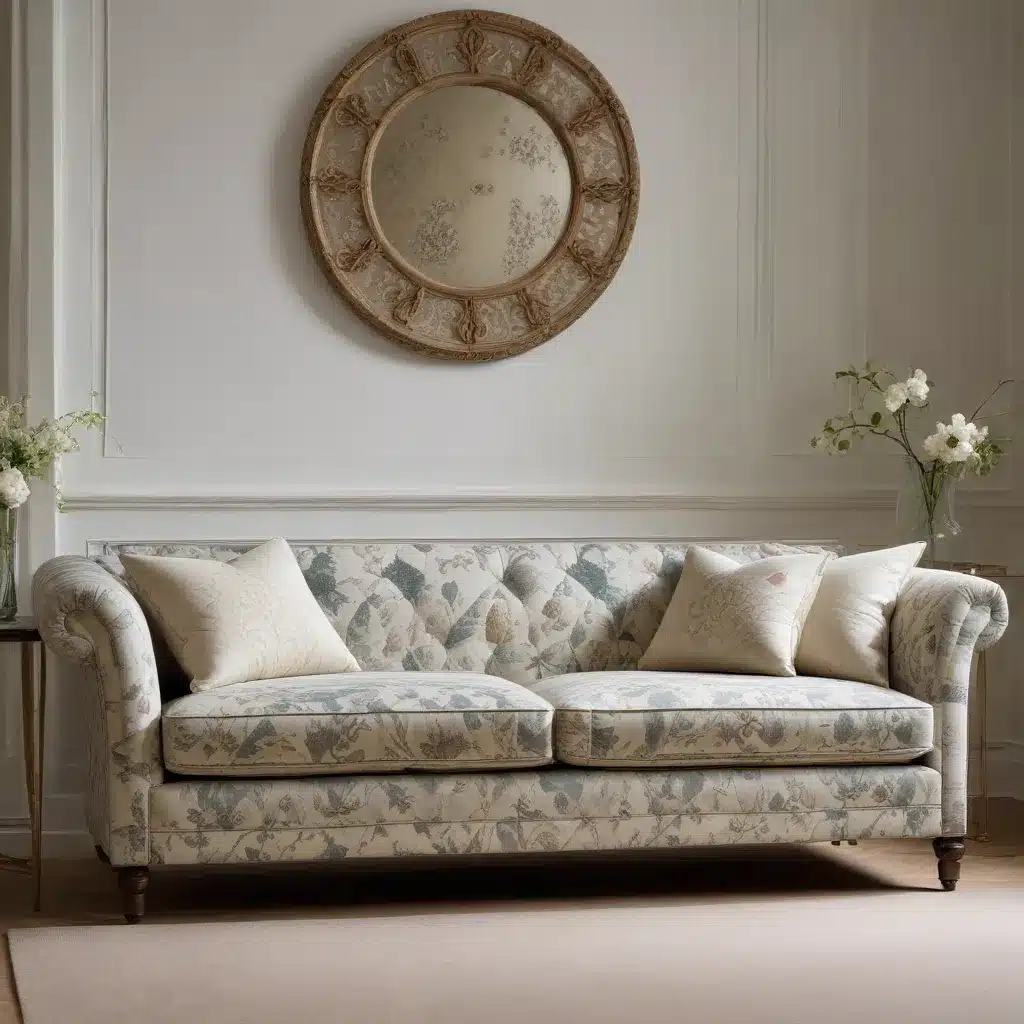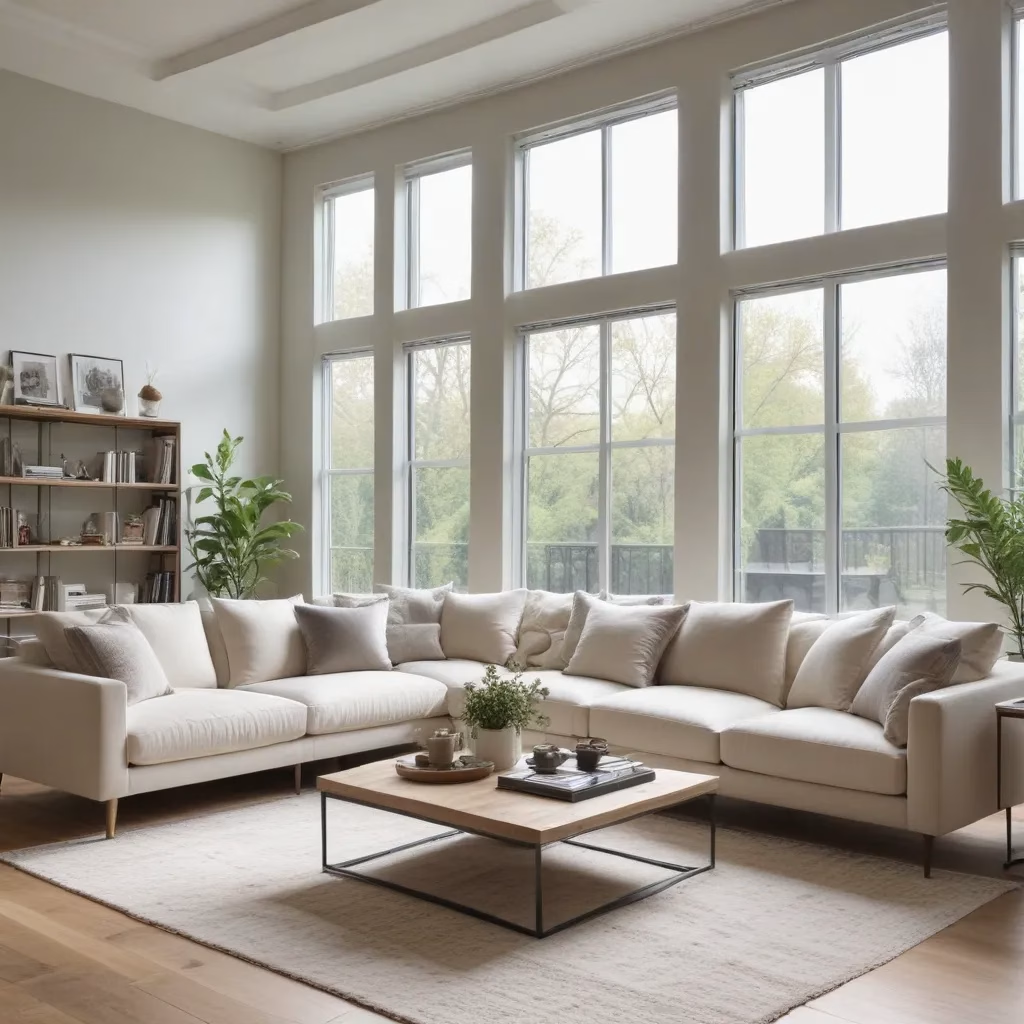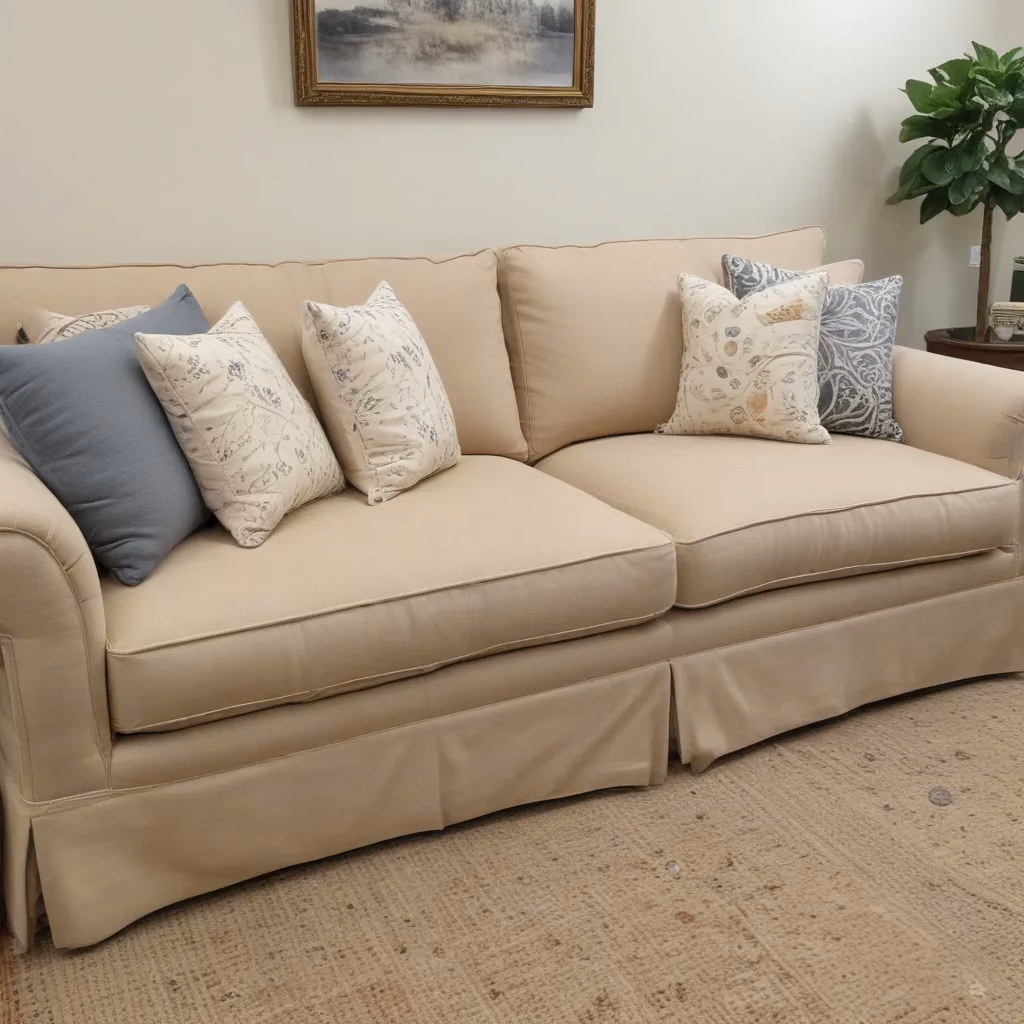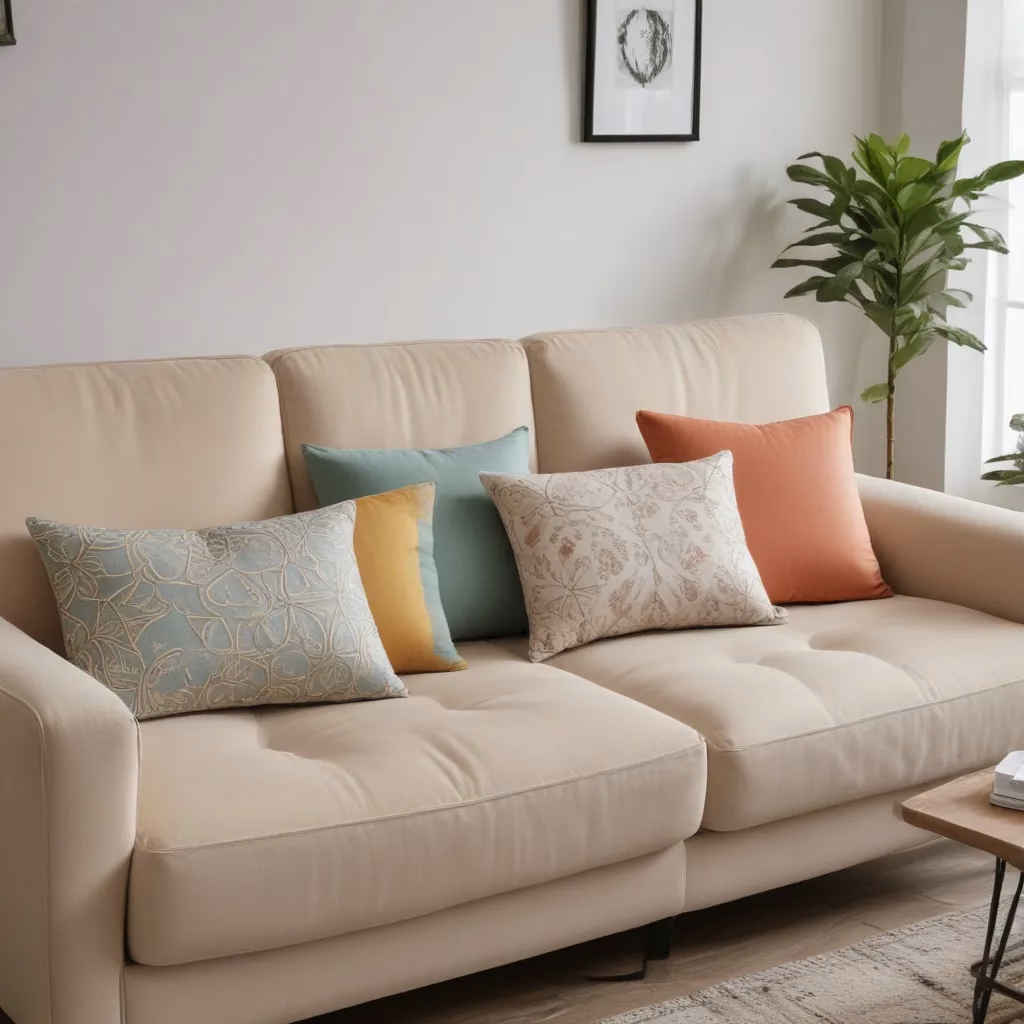
The Evolution of Sofa Design in the UK
The British living room has long been a sanctuary of comfort and style, with the sofa at its heart. As we approach September 2024, the landscape of sofa design in the UK continues to evolve, blending traditional craftsmanship with modern aesthetics. This fusion has given rise to a new era of sofa styles that cater to the diverse tastes of British homeowners.
In recent years, there has been a noticeable shift towards sofas that combine classic silhouettes with contemporary fabrics. This trend reflects a broader movement in British interior design, where consumers seek furniture that honours heritage while embracing current lifestyle needs. The result is a range of sofas that feel both familiar and fresh, offering the comfort of tradition alongside the excitement of modern design.
One of the most significant changes in sofa design has been the approach to upholstery. While traditional patterns and textures still have their place, there’s a growing appetite for fabrics that push the boundaries of what’s expected in a British living room. Bold colours, innovative weaves, and unexpected material combinations are becoming increasingly popular, allowing homeowners to make a statement with their seating choices.
Choosing the Right Material for Your Sofa
When it comes to selecting the perfect sofa, the choice of material is paramount. It not only affects the look and feel of the piece but also its durability and maintenance requirements. In the UK market, several materials have risen to prominence, each offering unique benefits to suit different lifestyles and preferences.
Leather vs. Fabric: A Comparative Analysis
To help you make an informed decision, let’s compare leather and fabric upholstery options:
| Aspect | Leather | Fabric |
|---|---|---|
| Durability | Highly durable, improves with age | Varies by type, can be treated for longevity |
| Maintenance | Easy to clean, resistant to spills | Requires more frequent cleaning, may stain |
| Comfort | Initially firm, softens over time | Generally softer, wide range of textures |
| Cost | Higher initial investment | More affordable options available |
| Variety | Limited colour options | Vast array of patterns and colours |
| Environmental Impact | Long-lasting, but production concerns | Depends on material, some eco-friendly options |
Leather sofas have long been a staple in British homes, prized for their durability and timeless appeal. They offer a sleek, sophisticated look that can complement both traditional and modern interiors. As leather ages, it develops a unique patina, adding character to the piece. However, the limited colour palette and higher cost can be drawbacks for some consumers.
On the other hand, fabric sofas provide a wider range of design possibilities. With countless textures, patterns, and colours available, fabric upholstery allows for greater personalisation of living spaces. Advances in textile technology have also improved the durability and stain resistance of many fabric options, making them a practical choice for busy households.
Emerging Materials in Sofa Upholstery
Beyond the classic leather vs. fabric debate, new materials are making their mark on the UK sofa market. Performance fabrics, which offer enhanced durability and stain resistance, are gaining popularity among families and pet owners. These materials combine the aesthetic versatility of traditional fabrics with improved functionality.
Another trend is the use of natural, sustainable materials in sofa construction and upholstery. Linen, wool, and cotton blends are seeing a resurgence, appealing to environmentally conscious consumers. These materials not only offer a connection to nature but also provide excellent breathability and comfort.
Contemporary Fabric Choices Reshaping Sofa Design
The UK furniture industry is experiencing a renaissance in fabric design, with contemporary textiles playing a crucial role in reinventing traditional sofa styles. This shift is not just about aesthetics; it’s a response to changing lifestyles and a growing appreciation for the artistry of textile production.
The Rise of Artisanal Fabrics
Handcrafted textiles are making a significant impact on sofa design. These fabrics, often produced using traditional techniques, bring a sense of authenticity and uniqueness to modern sofas. The appeal lies in their ability to tell a story through texture and pattern, creating a connection between the furniture and its owner.
Many UK designers are collaborating with artisans to create bespoke fabrics that showcase intricate weaves and prints. These collaborations often result in limited edition upholstery options that appeal to consumers looking for exclusive, one-of-a-kind pieces. The use of these artisanal fabrics on classic sofa shapes creates a striking juxtaposition that embodies the essence of contemporary British design.
Technological Advancements in Fabric Production
While there’s a growing appreciation for handcrafted textiles, technological innovations are also shaping the future of sofa fabrics. Advanced manufacturing techniques have led to the development of high-performance materials that offer superior durability without compromising on style or comfort.
These new-generation fabrics often incorporate features such as:
- Stain resistance
- UV protection to prevent fading
- Antimicrobial properties
- Increased breathability for temperature regulation
The integration of these technologies allows for sofas that are not only visually appealing but also highly practical for everyday use. This is particularly relevant in the UK market, where consumers value furniture that can withstand the demands of busy households and varying weather conditions.
Colour Trends in Contemporary Sofa Fabrics
The colour palette for sofa fabrics in the UK has expanded significantly in recent years. While neutral tones remain popular for their versatility, there’s a growing boldness in colour choices. Rich jewel tones such as emerald green, sapphire blue, and amethyst purple are making their way into living rooms, adding depth and sophistication to interior spaces.
Earthy hues inspired by the British landscape are also trending. Warm terracottas, muted sage greens, and soft heathers offer a connection to nature while providing a cosy atmosphere. These colours work particularly well with natural fabric choices, creating a harmonious and inviting living environment.
For those seeking a more dramatic look, deep charcoals and inky blues are becoming increasingly popular. These darker shades can create a sense of luxury and intimacy in a space, especially when paired with contrasting light-coloured walls or accessories.
Balancing Comfort and Style in Modern Sofa Design
The ideal sofa should be a perfect blend of comfort and style, a balance that UK designers are continually striving to achieve. As we move towards September 2024, several key factors are influencing how sofas are constructed to meet the demands of contemporary British homes.
Ergonomic Considerations in Sofa Design
Comfort is no longer just about soft cushions; it’s about supporting the body correctly for long periods of sitting. UK sofa manufacturers are increasingly incorporating ergonomic principles into their designs, recognising that many people spend significant time on their sofas, whether working from home or relaxing.
Key ergonomic features being integrated into modern sofas include:
- Lumbar support to maintain proper spinal alignment
- Seat depth options to accommodate different body types
- Adjustable headrests for neck support
- Reclining mechanisms that distribute weight evenly
These ergonomic elements are being seamlessly blended with stylish designs, ensuring that comfort doesn’t come at the expense of aesthetics. The result is a new generation of sofas that look as good as they feel, catering to the discerning tastes of UK consumers who refuse to compromise on either comfort or style.
Modular and Multifunctional Sofa Solutions
The trend towards flexible living spaces has given rise to modular and multifunctional sofas. These versatile pieces allow homeowners to adapt their seating arrangements to suit different occasions or to reconfigure their living areas as needs change.
Modular sofas typically consist of individual sections that can be arranged in various configurations. This flexibility is particularly valuable in UK homes where space may be at a premium. Some popular modular sofa features include:
- Interchangeable sections for customised layouts
- Built-in storage compartments
- Convertible elements such as pull-out beds or adjustable backrests
Multifunctional sofas take this concept further by incorporating additional features that serve multiple purposes. For example, some designs include integrated side tables, charging ports for electronic devices, or even built-in lighting. These smart features reflect the changing ways in which UK residents use their living spaces, particularly in the context of increased remote working.
The Role of Texture in Contemporary Sofa Design
Texture plays a significant role in both the visual appeal and tactile experience of a sofa. UK designers are experimenting with a variety of textures to create sofas that are not only comfortable but also sensory delights.
Popular textures in contemporary sofa fabrics include:
- Soft, plush velvets for a luxurious feel
- Nubby bouclé fabrics for added visual interest
- Smooth, matte finishes for a modern look
- Textured weaves that combine different yarn thicknesses
The interplay of textures can add depth and character to a sofa, making it a focal point in the room. Many UK homeowners are opting for sofas with contrasting textures, such as a smooth leather frame with fabric cushions, to create a dynamic and inviting seating area.
Sustainable Practices in Sofa Manufacturing
Sustainability has become a key concern for UK consumers, and this is reflected in the sofa manufacturing industry. As environmental awareness grows, there’s an increasing demand for sofas that are not only stylish and comfortable but also produced with minimal ecological impact.
Eco-Friendly Materials in Sofa Production
The use of sustainable materials in sofa construction is on the rise. UK manufacturers are exploring alternatives to traditional materials that offer similar or improved performance while being more environmentally friendly.
Some of the eco-friendly materials gaining traction in sofa production include:
- Recycled polyester fabrics made from plastic bottles
- Organic cotton and linen blends grown without harmful pesticides
- Jute and hemp fibres for durable, biodegradable upholstery
- Bamboo-based fabrics known for their softness and quick renewability
These materials are not only better for the environment but often bring unique textures and qualities to sofa design, appealing to consumers who value both sustainability and style.
Circular Economy Approaches in the Sofa Industry
The concept of a circular economy, where products are designed to be reused, repaired, or recycled, is gaining momentum in the UK furniture sector. Some innovative approaches being adopted include:
- Modular designs that allow for easy replacement of individual components
- Take-back schemes where manufacturers reclaim and refurbish old sofas
- Use of easily separable materials to facilitate recycling at end-of-life
These initiatives are reshaping the way UK consumers think about furniture longevity and disposal, encouraging a more sustainable approach to home furnishings.
Energy-Efficient Manufacturing Processes
UK sofa manufacturers are also focusing on reducing the environmental impact of their production processes. This includes:
- Implementing energy-efficient machinery and lighting in factories
- Optimising supply chains to reduce transportation emissions
- Using water-based adhesives and low-VOC finishes to improve air quality
These efforts not only benefit the environment but can also lead to cost savings that may be passed on to consumers, making sustainable sofas more accessible to a wider market.
Navigating the UK Sofa Market: Tips for Consumers
With the wide array of options available in the UK sofa market, choosing the right piece can be overwhelming. Here are some practical tips to help consumers make informed decisions when shopping for a new sofa.
Assessing Your Lifestyle Needs
Before starting your sofa search, consider your lifestyle and how the sofa will be used:
- Do you have children or pets?
- How many people need to be seated regularly?
- Do you entertain often?
- Is the sofa for a formal living room or a casual family space?
Answering these questions will help narrow down your options in terms of size, style, and fabric choice.
Measuring Your Space
One of the most common mistakes in sofa shopping is choosing a piece that’s too large or small for the room. To avoid this:
- Measure your room dimensions carefully
- Consider the flow of traffic around the sofa
- Use painter’s tape on the floor to outline the sofa’s footprint
- Don’t forget to measure doorways and staircases to ensure the sofa can be delivered
Testing for Comfort
Comfort is subjective, so it’s essential to test sofas in person whenever possible. When visiting showrooms:
- Sit on the sofa for at least 10 minutes to get a true sense of comfort
- Try different seating positions
- Check the seat depth and backrest height
- Feel the firmness of the cushions
Understanding Fabric Durability
When selecting a fabric, consider its durability rating. In the UK, fabrics are often rated using the Martindale rub test:
| Martindale Rating | Suitable For |
|---|---|
| 10,000-15,000 | Decorative use only |
| 15,000-25,000 | Light domestic use |
| 25,000-30,000 | General domestic use |
| 30,000+ | Heavy domestic or commercial use |
Choose a fabric with a Martindale rating appropriate for your intended use to ensure longevity.
Considering Long-Term Value
While it can be tempting to opt for a lower-priced sofa, consider the long-term value:
- Higher quality sofas may have a higher upfront cost but can last longer
- Look for warranties and after-sales service
- Consider the cost of potential reupholstering in the future
Investing in a well-made sofa can often be more economical over time than replacing a cheaper model every few years.
The Future of Sofa Design in the UK
As we look towards the future of sofa design in the UK, several trends are likely to shape the industry in the coming years.
Integration of Smart Technology
The integration of technology into furniture is set to continue, with sofas becoming smarter:
- Built-in charging stations and USB ports
- Embedded speakers for enhanced entertainment experiences
- Temperature-regulating fabrics for optimal comfort
- App-controlled adjustable features
These technological advancements will likely be seamlessly integrated into designs, maintaining the aesthetic appeal while adding functionality.
Customisation and Personalisation
The demand for personalised furniture is expected to grow, with more UK manufacturers offering customisation options:
- Mix-and-match fabric choices for different sofa components
- Modular designs that can be reconfigured over time
- 3D printing technology for bespoke decorative elements
This trend towards customisation allows consumers to create sofas that truly reflect their personal style and meet their specific needs.
Emphasis on Health and Wellness
As awareness of the importance of physical and mental wellbeing increases, sofa design is likely to evolve to support healthier lifestyles:
- Materials that improve air quality, such as fabrics that neutralise pollutants
- Designs that encourage better posture and movement
- Integration of stress-reducing elements, like weighted or massage features
These health-focused innovations could transform the sofa from a passive piece of furniture into an active contributor to home wellness.
Continued Focus on Sustainability
The push for sustainability in sofa manufacturing is expected to intensify:
- Development of new eco-friendly materials
- Increased transparency in supply chains
- Design for disassembly to facilitate recycling and reduce waste
UK consumers are likely to place even greater importance on the environmental credentials of their furniture choices in the future.
Conclusion: Embracing the New Era of Sofa Design
The world of sofa design in the UK is undergoing a remarkable transformation, blending traditional craftsmanship with cutting-edge innovation. As we’ve explored throughout this article, contemporary fabrics are playing a pivotal role in reinventing classic sofa styles, offering a perfect balance of comfort, style, and functionality.
From the rise of artisanal textiles to the integration of smart technologies, the sofas of today and tomorrow are designed to meet the diverse needs of modern British homes. The emphasis on sustainability, customisation, and health-conscious features reflects a deeper understanding of consumer values and lifestyle requirements.
As you consider your next sofa purchase, remember that the perfect piece is one that not only looks beautiful in your space but also aligns with your personal needs and values. Whether you prioritise eco-friendly materials, cutting-edge design, or timeless elegance, the UK sofa market offers a wealth of options to suit every taste and requirement.
For those looking to explore the latest in sofa design and find inspiration for their home, Sofa Spectacular offers a curated selection of contemporary pieces that exemplify the best of British furniture craftsmanship. By choosing a sofa that resonates with your style and meets your practical needs, you’re not just buying a piece of furniture – you’re investing in the comfort and character of your home for years to come.



